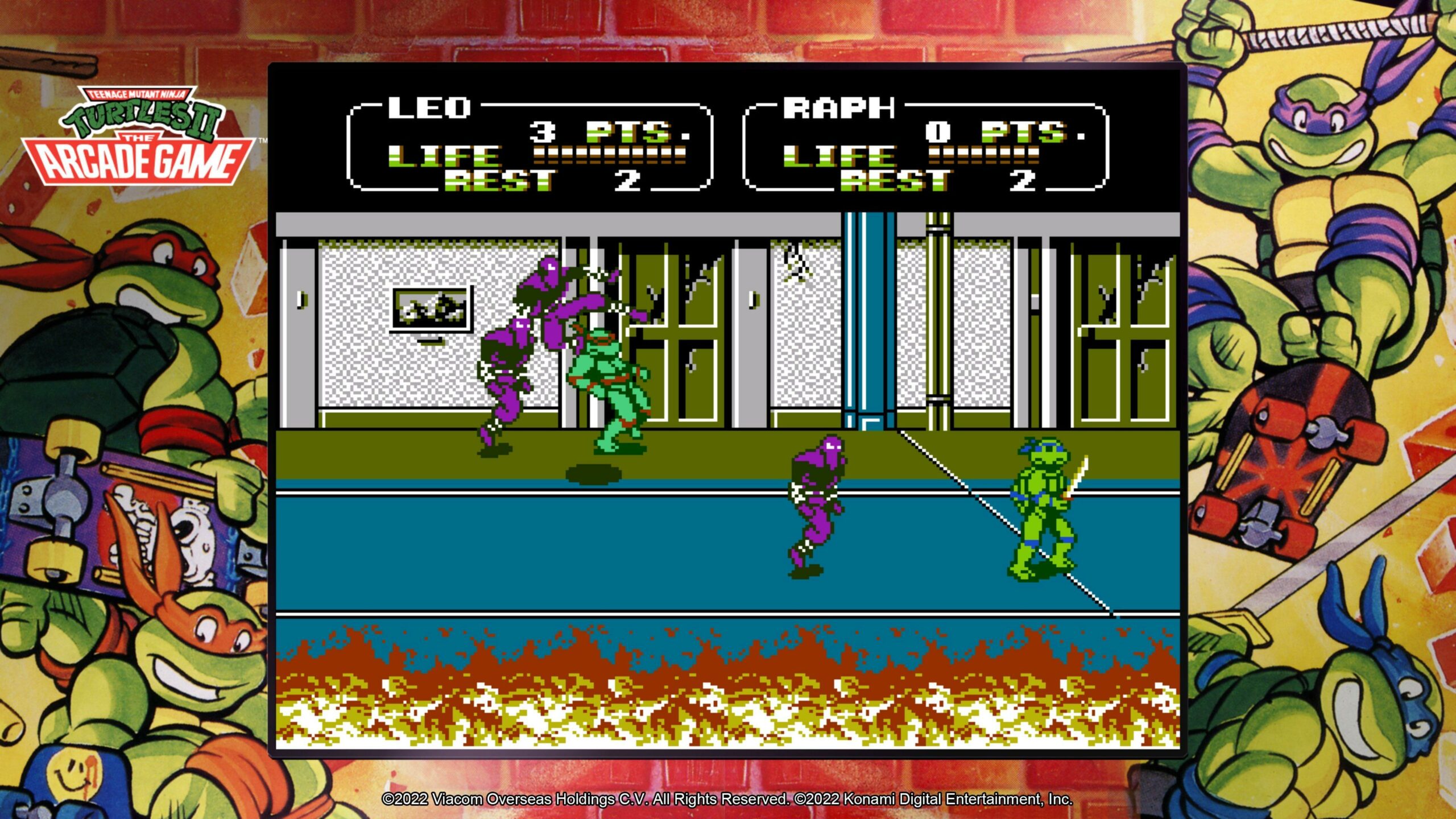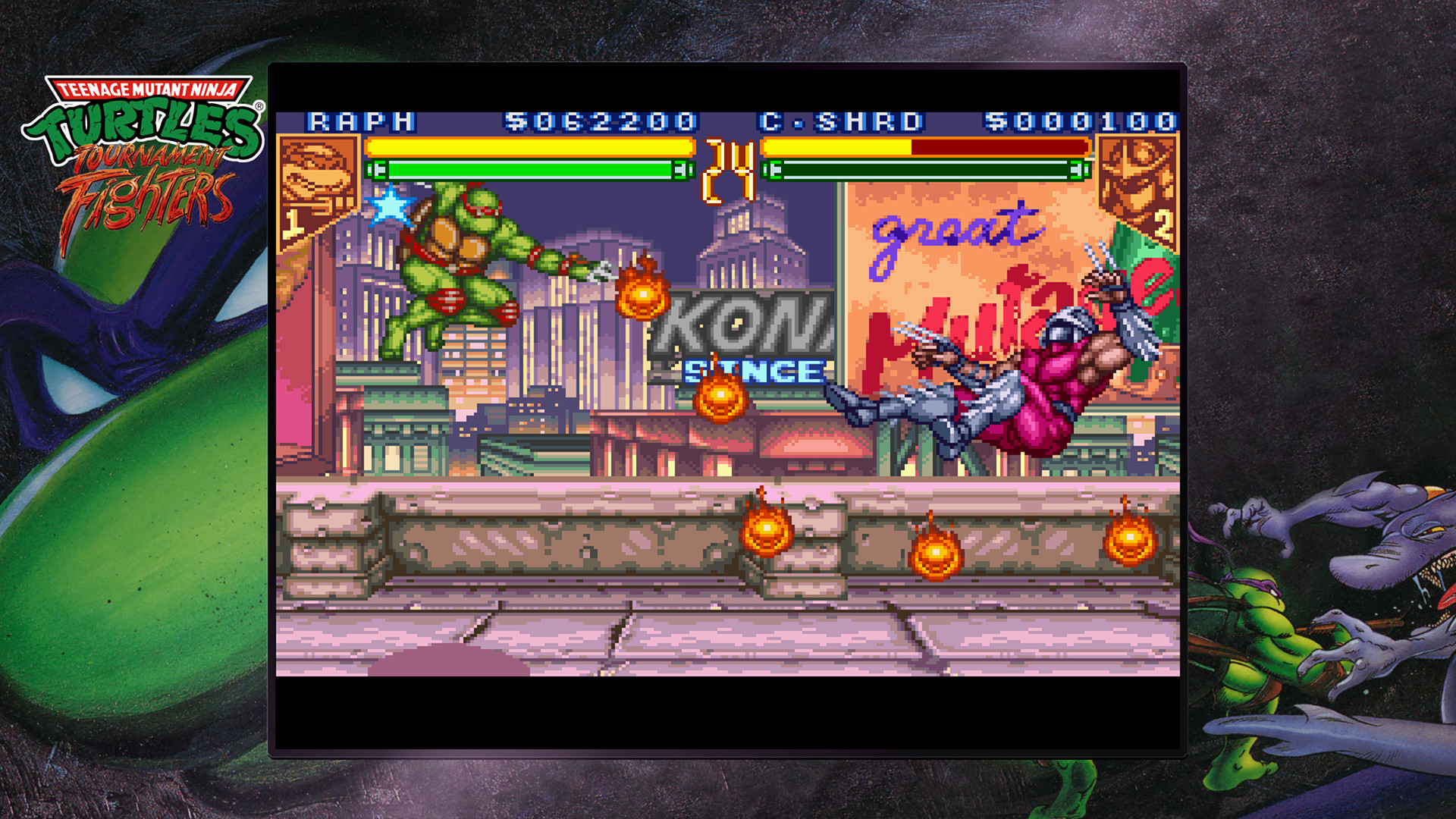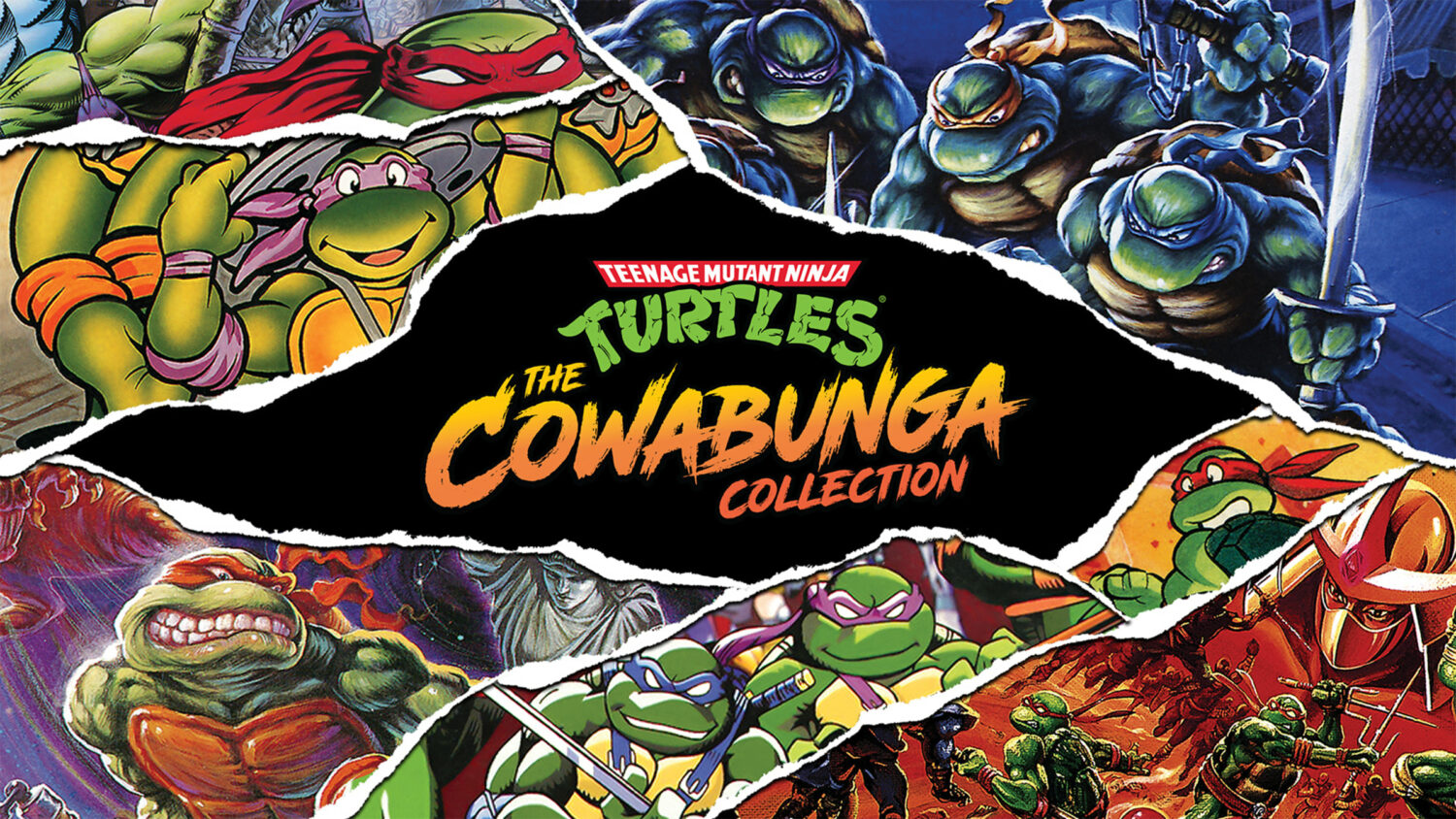I’ll be honest; I’m a really big fan of gaming collections. Over the last few years, we’ve seen everything from Street Fighter to MegaMan to Castlevania come back in beautiful, retro collections. These collections give many people the chance to play great classics once again, beautifully emulated on new hardware. It’s also the time for people to remember how great a series was in the past and how great they still can be today. I grew up watching the Teenage Mutant Ninja Turtles TV show and playing the games at home. So imagine my surprise when Konami announced the Teenage Mutant Ninja Turtles: The Cowabunga Collection. 13 of some of the best games coming back for the first time in decades (well, at least 8 great games). It’s not a complete slam dunk, however you cannot afford to miss out on it.

This collection takes classic Teenage Mutant Ninja Turtles games from the arcades, NES, Game Boy, SNES, and Sega Genesis consoles into one beautiful collection. When I say beautiful, I really mean beautiful. Digital Eclipse always knocks it out of the park when they do retro game collections, and the Cowabunga Collection is no different. The amount of bonus content you get is insane. From being able to look at all the box art for every single game released, to the game manuals included in the boxes, to even the design documents that went into making them, you are getting absolutely the most in-depth look behind a collection ever. That’s not even counting the music player, which has so much amazing music to jam out to, to even re-created Nintendo Power strategy guides. Seriously, it’s absolutely insane what they manage to pull off to celebrate these games.
What about the games themselves? Thankfully the Teenage Mutant Ninja Turtles: The Cowabunga Collection takes some of the absolute best Ninja Turtles games and brings them to new hardware, and boy do they shine on Nintendo Switch. I had to dive right back into Teenage Mutant Ninja Turtles: Turtles in Time, which is my absolute favorite Ninja Turtles game. Everything about the emulation is perfect and exactly how I remember playing the game years ago. Yet you don’t just get the home console version but also the arcade version, which is slightly better than his home console counterparts.
You also get some really good NES games in Turtles 2: The Arcade Game and The Manhattan Project, and Sega Genesis’s The Hyperzone Heist. These three games surprisingly hold up well after all these years and are an absolute blast to jump back into. Yes, all three games are very similar beat-em-ups, but is there anything wrong with having more of a good thing? I don’t think so.

The issue with any collection is that inevitably you get the good games and also the bad ones. Teenage Mutant Ninja Turtles for the NES and the first two Game Boy Ninja Turtles games are absolutely terrible. The NES version of Teenage Mutant Ninja Turtles was laughably difficult back in the day, so much so that almost no one ever got to beat the final boss. I’m not just talking about that Damn level that has lived on in video game infamy. The entire game had an insane difficulty spike that never relented throughout your playthrough and often left you frustrated beyond compare. While the rewind and save state feature certainly helps, the game is designed to be so difficult that you fail. This means that your enjoyment of the game hasn’t really changed over the years. It still sucks, and nothing can really help fix that.
The first two Ninja Turtles games on GameBoy (Fall of the Foot Clan & Back from the Sewers) are equally bad. Early GB games had this weird fascination for trying to convert the home console experience onto the GB. In theory, that would make sense, but more often than not, you would get a very broken, poorly running experience that wasn’t very good. That’s the case here with these two GB games. Characters crawl through levels, and neither game really succeeds at what they’re trying to go for. The game screen is too small for the platforming sections to be fun and also moving way too slow for it to be a competent brawler. It’s interesting to have these games in the collection, but I highly doubt anyone’s going to spend much time playing them. Surprisingly, the third GB game included in the collection, Radical Rescue, is a much better portable experience. The developers finally figured out that you could create a unique experience on GB that worked with his portable nature and Radical Rescue does this.
Finally, the last game that I would label as terrible in this collection are both the SNES & Genesis versions of Tournament Fighters. Inevitably someone at Konami thought the Ninja Turtles would make a perfect lead in a 1v1 fighting game, think Street Fighter. On paper, this sounds like a really great idea, considering the diverse cast of villains and heroes you could include in such a game. However, the remarkable thing about Teenage Mutant Ninja Turtles: Tournament Fighters is how the absolute worst characters in the entire game are the Ninja Turtles. None of them control very well and it’s obvious that the villains are much more powerful fighters, with their kicks and hits dealing way more damage than anything the Ninja Turtles can throw out there. The thing is, you don’t truly figure this out on your own until you’ve failed quite a few times using the Ninja Turtles. The game itself is a passable fighting experience but not a very fun one.

As a whole, The Cowabunga Collection is a wonderful walk-through of early 90s Ninja Turtles games. It’s awesome to be able to play these games and have friends with you to play locally, just like the old days. However, The Cowabunga Collection states that it has online play, something that got me insanely excited when I heard about it. Unfortunately, the online play in The Cowabunga Collection might be some of the worst online experiences you can find.
I tried for so long to get a game working with friends, yet there wasn’t a single instance where I could keep an online game going for more than 20 or 30 seconds. Usually, it would start with players disconnecting and reconnecting before the game even started. If by some miracle we could connect, we usually found ourselves in the game running at five frames a second when it finally started. The issue never went away either, despite the fact that we all were trying to play with wired connections. It’s also not just an issue on Nintendo Switch. My friends were playing on other consoles and even they said they couldn’t connect to friends who were also playing on the same console without having major lag issues. It was one of my most anticipated modes that I wanted to jump into, but it’s the one mode I absolutely have to warn people to avoid. Until a patch or fix comes out, online play is simply impossible to play. That said, playing the game locally is just as good as I remember it. It was super easy to pick up a few controllers and jump into the action.
In the end, Teenage Mutant Ninja Turtles: The Cowabunga Collection is one of the best retro gaming collections to come out in years. Obviously the developers absolutely loved the series, because every single moment of this collection is bursting with Ninja Turtle love. From including some of the best home console and arcade games, to including the most in-depth behind-the-scenes look at the games, The Cowabunga Collection sets the new standard for how retro collections should be. While the collection includes a few less than stellar games you should probably avoid, there are 8 great games to jump in to and have a great time. These are some of the best games to appear on a Nintendo (or Sega) console in the past and a great way to revisit these classics again today on Nintendo Switch.
Review: Teenage Mutant Ninja Turtles: The Cowabunga Collection (Nintendo Switch)
Good
Teenage Mutant Ninja Turtles: The Cowabunga Collection is one of the best retro gaming collections to come out in years. Obviously the developers absolutely loved the series, because every single moment of this collection is bursting with Ninja Turtle love. From including some of the best home console and arcade games, to including the most in-depth behind-the-scenes look at the games, The Cowabunga Collection sets the new standard for how retro collections should be. While the collection includes a few less than stellar games you should probably avoid, there are 8 great games to jump in to and have a great time. These are some of the best games to appear on a Nintendo (or Sega) console in the past and a great way to revisit these classics again today on Nintendo Switch.


